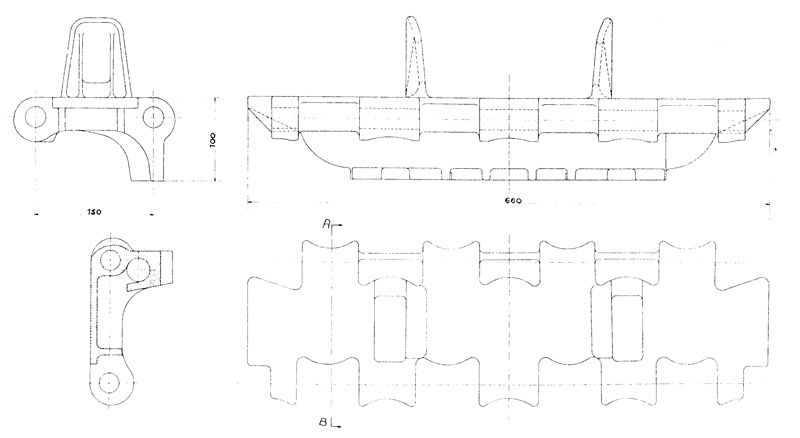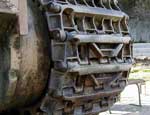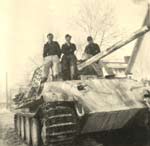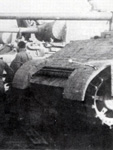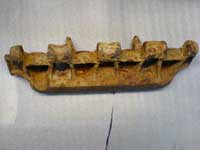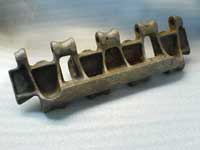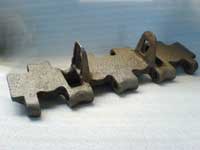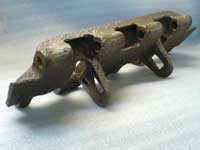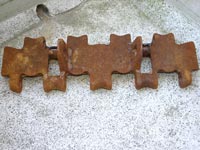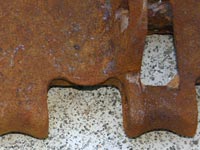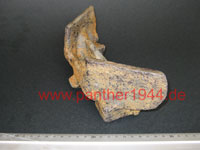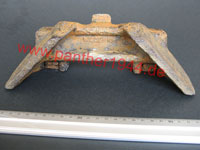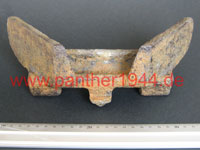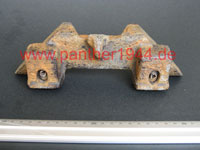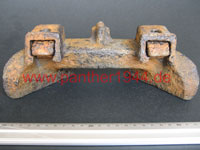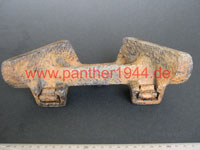Tracks for the Panzerkampfwagen Panther
(identical to the Jagdpanther tracks!)

The tracks for the Panthers were so called "Trockenbolzen-Scharnierkette" (dry single-pin track).
The exact name was: Kgs 64/660/150
Thereby 660 means the width of the tracks (660 mm) and 150 for the chain pitch of 150 mm.
Kgs was a coded term by the Heereswaffenamt/WaPrüf 6 (design/construction material of the track link/linking of the track)
K = Schnelllauffähige Kette für Kraftfahrzeuge
g = Stahlguß aller Legierungen
s = schwimmende Bolzen
As a casting material for German tank tracks before 1945, you can very often find the name Niresit as material. Niresist ist the name for an austenitic material that is now used in exhaust manifolds, and in the glass producing industry for molds. This material can be used with temperatures up to about 1000 degrees Celsius (depending on the alloy).
Strangely for a material that was formerly used as track material ...
According to the manufacturer and manuals 86 chain links per chain were needed. However, it varied, depending on the necessary chain tension and chain length. A complete chain weighed 2050 kg.
Basically there are 2 versions of the track. An early version with plain track link faces and a late one with with six cheveroned cleats on the link faces to increase grip. The introduction of the late chain started in September 1943.
For travelling on icy roads and country ice sprags (Mittelestollen) could be mounted into the track.
Technical data:
| Track links per side: | 86 |
| Track contact length: |
3920 mm |
| Track width | 660 mm |
| Track contact surface in total | 5,1744 m² |
| Track pitch | 150 mm |
|
Track weight: |
2050 kg |
| Ground pressure:: |
0,88 kp/cm² Ausf. D and A 0,89 kp/cm² Ausf. G and F |
 |
||
|
track link dimensions, late version
|
ice sprags (Mittelestollen)
|
|
| late version tracks with six cheveroned cleats | brand new Panther Ausf. D with old type tracks short bevore release | |
|
Panther with stowed Mittelstollen on the glacies plate
|
||



